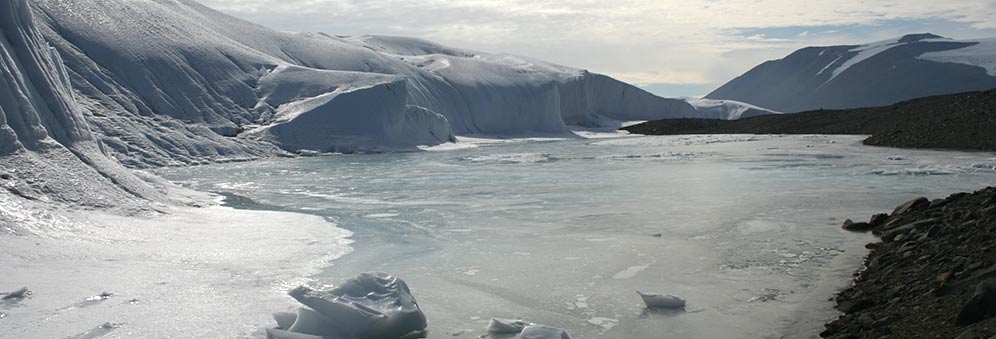Protecting subglacial environments in Antarctica
Research into Antarctica's network of dynamic subglacial lakes helped shape a Code of Conduct, enabling scientific discovery without compromising these unique habitats.
Research led by Professor Martin Siegert at the Bristol Glaciology Centre transformed our image of Antarctica from a lifeless frozen landscape to a living network of dynamic subglacial lakes. This shift was instrumental in adopting a Code of Conduct that is supporting the next generation of scientific discovery without compromising these unique habitats.
Around 400 lakes lie hidden beneath the ice sheets of Antarctica. Investigating these subglacial environments requires direct measurement and sampling but traditional ice-coring methods can't ensure the protection of these unspoilt environments. Professor Martin Siegert and his colleagues at the Bristol Glaciology Centre demonstrated how scientific discovery was possible using new clean drilling technologies.
What lies beneath
Lake Vostok is a deep freshwater lake beneath the ice of central East Antarctica; it is one of the five largest lakes on Earth. Siegert and his colleagues, including Professor Martyn Tranter in Bristol's School of Geographical Sciences, showed that the hydrochemistry of the lake could support a microbial community, which has been evolving in isolation for millions of years. Not only would these communities likely contain organisms new to science, they could offer a window into the ancient past and the conditions that shaped their evolution.
Contamination of such a unique system would be devastating and potentially widespread. Using satellite observations, Siegert related sinking and lifting of the ice surface over time to rapid movement of water below the ice-sheet. He showed that water was being discharged from one lake to another, located over 200km away. This revealed the connectivity of these systems for the first time, and provided evidence that contamination in one lake could compromise an entire drainage system.
Adoption of a Code of Conduct
International relations with respect to Antarctica are regulated by the Antarctic Treaty System, which at its core establishes Antarctica as a scientific preserve -a place for peaceful activities and scientific discovery that is free of territorial dispute. Over 50 countries meet annually at the Antarctic Treaty Consultative Meetings (ATCM) to exchange information and make decisions pertaining to Antarctica. The Scientific Committee on Antarctic Research (SCAR) is the body that makes recommendations to the ATCM on any matters relating to science.
'[Siegert's published] papers were crucial in improving our understanding of the subglacial system of Antarctica as a pristine, potentially fragile ecosystem that required formalised protection during direct measurement and sampling,' said Dr Michael Sparrow, Executive Director of SCAR.
In 2011, SCAR presented a formal Code of Conduct for the exploration and research of subglacial aquatic environments, which was adopted at the XXXIV ATCM in Buenos Aires. Siegert informed the development of this Code of Conduct directly as a contributing member of the SCAR Subglacial Antarctic Lake Environments Scientific Research Program, but also indirectly through an influencial report published by the US National Academy of Sciences, which cites Siegert's research extensively. The Code of Conduct binds Antarctic Treaty members to undertaking research in a clearly defined and responsible manner.
Priorities for the future
Since the adoption of the Code of Conduct, research teams from the US and UK have developed clean technologies that has led them to undertake the sampling of subglacial lakes without risking contamination. In 2014, samples taken by US scientists confirmed a thriving microbial ecosystem existing in the lake water and sediments of Subglacial Lake Whillans.
In March 2015, Siegert gathered 60 researchers from 12 countries at the UK Royal Society's Chicheley Hall to discuss the results of the first phase of research in this field and to identify the priorities for future research. It was agreed that technology for clean, reliable sampling is a fundamental prerequisite for subglacial lake exploration.
'The way we approach research in these subglacial aquatic environments is now accepted internationally,' said Siegert. 'It has become engrained in our way of thinking and will influence our way forward.'
In recognition of the impact of his research, Siegert was awarded the 2013 Martha T. Muse Prize for Antarctic Science and Policy by the Tinker Foundation.
Related researchers
Related research groups
 Study Physical Geography
Study Physical Geography
Join us in addressing some of the biggest challenges of the 21st century.
